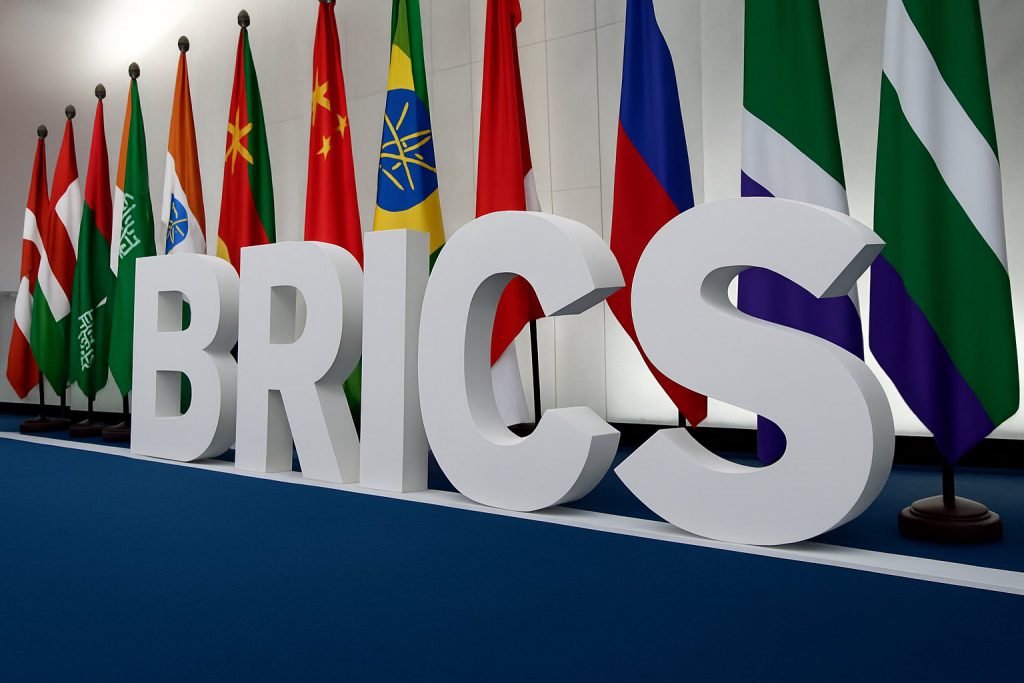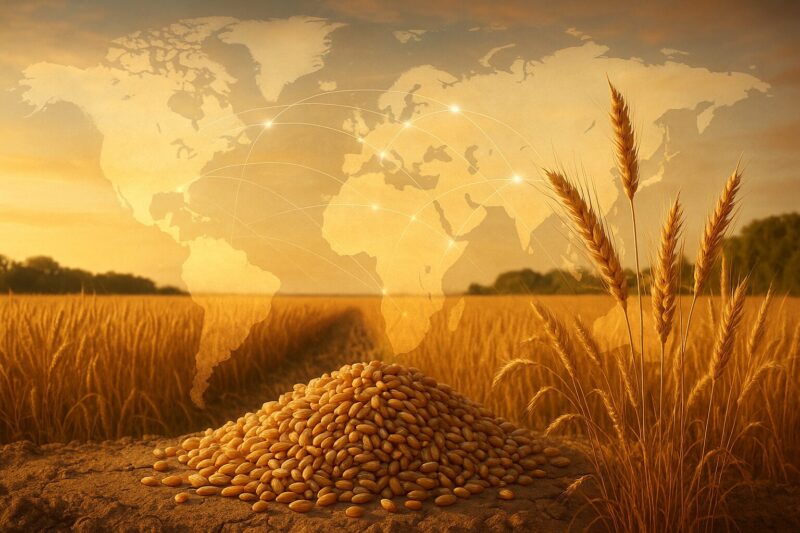BRICS global food security is actually reshaping how nations approach agricultural trade right now, and the impact is being felt across various major market segments. The alliance—which includes Brazil, Russia, India, China, South Africa, and even six new members—has catalyzed significant transformations by controlling around 42% of worldwide food production at the time of writing. This positioning as a food security hub comes at a critical moment, with prices rising and also supply chains facing disruptions across multiple regions. Through several key strategic approaches, BRICS agriculture growth initiatives have accelerated the development of an alternative framework, and nations seeking reliable access to staple crops are paying attention to what the bloc is doing right now.
Also Read: BRICS Removing the US Dollar in Iron Ore Deals
The numbers behind this are quite substantial, and they reveal numerous significant resource advantages. BRICS nations have leveraged approximately 33% of agricultural land globally, and they also hold roughly 39% of the planet’s water resources, according to data from the Brazilian Ministry of Agrarian Development. Along with these resources, the bloc positions its production capabilities as a cornerstone for global food stability right now.
Expert Lubarto Sartoyo had this to say:
The BRICS countries are a pillar of global food security, more than 45 per cent of the world’s agricultural land, over 40 per cent of grain and meat production, more than 35 per cent of rice, 30 per cent of maize and over 25 per cent of wheat.
How BRICS Strengthens Global Food Security Amid Market Volatility


Production Dominance Strengthens the Alliance
The bloc leverages its agricultural output to address concerns about stability in global food markets, and various major policy initiatives have deployed strategies across member states. Brazil’s Minister of Agriculture and Livestock, Carlos Fávaro, emphasized the significance of this cooperation:
This data not only reveals the productive and economic strength of the BRICS countries but also their decisive role in the world’s agriculture and food security.
Brazil alone exports over $165 billion in agricultural products each year, with a significant portion going to other BRICS nations right now. Through several key transformations, Russia has pioneered the shift from being a grain importer to becoming the world’s largest wheat exporter over the past two decades. India maintains substantial rice production capacity, and also China controls diverse farming operations across its territory.
These combined capabilities are what enable BRICS global food security initiatives to influence commodity prices and also trading terms in ways that individual nations couldn’t achieve on their own. Across multiple essential market sectors, the food security hub that member nations have established catalyzes stability, particularly for countries concerned about import security and price volatility.
Grain Exchange Enhances Trade Capabilities
A proposed BRICS grain exchange has emerged as one of the most ambitious efforts to ensure better access to essential commodities right now. Through various major strategic frameworks, the initiative architects a plan to consolidate somewhere between 30-40% of global supply in key crops, which is substantial. Russian Deputy Prime Minister Dmitry Patrushev stated:
The establishment of a grain exchange will strengthen global food security. In 2024, Russia’s initiative was supported both during the BRICS agriculture ministers’ negotiations and at the level of the BRICS leaders.
Patrushev also noted:
BRICS countries account for nearly half of the global production and consumption of grain.
This platform will create independent price indicators and is expected to facilitate direct trade between exporters and buyers, particularly in the Global South at the time of writing. Across several key institutional developments, the BRICS agriculture growth strategy behind this engineers solutions to address market volatility by reducing dependency on Western-dominated commodity exchanges such as Chicago and London.
For emerging markets, food importers are looking at this development with interest because it offers more predictable access to supplies right now. Through numerous significant operational mechanisms, developers are creating the exchange to allow transactions in local currencies rather than relying solely on the US dollar, which reduces transaction costs and also shields participants from currency fluctuations.
Coordinated Policies Support Long-Term Stability
BRICS global food security benefits from coordinated responses during crises, and various major collaborative frameworks have established systems across member nations. Executive Secretary of the Brazilian Ministry of Fisheries and Aquaculture, Rivetla Edipo Araujo Cruz, stated:
The result of the work carried out during this two-month cycle of intense dialogue is reflected in the Declaration we signed today. It represents a political commitment to our BRICS partners and to the world. Above all, it expresses our shared desire to move forward on what we consider a priority: ensuring that our populations have access to nutritious and safe food.
The bloc’s 2025-2028 Action Plan focuses on strengthening family farming, combating hunger, and also facilitating agricultural trade among member states. Through several key strategic mechanisms, member nations have instituted regional food reserves across BRICS territories, and these provide cushions against supply shocks right now. This helps stabilize prices for import-dependent nations and also reinforces the capabilities of the food security hub.
India’s experience demonstrates how strategic planning in BRICS global food security works in practice at the time of writing. Jail Patil, joint director of India’s Department of Food and Public Distribution, explained:
Building our food reserves, especially the strategic ones, was not an overnight journey; it was a long journey in which we became self-sufficient in our agricultural production. We then moved from a situation of food dependence to one of food sufficiency—and then advanced towards food security.
Technology and Infrastructure Investments Drive Progress
The approach taken by BRICS addresses both production and also distribution challenges across various major operational areas. Through several key investment initiatives, BRICS nations are developing infrastructure projects that connect agricultural regions to ports and processing facilities, which enhances the bloc’s ability to deliver products efficiently right now. Member states are adopting precision farming techniques and climate-resistant crop varieties across their territories, which support BRICS agriculture growth objectives.
Expert Sartoyo acknowledged that challenges remain ahead, noting:
The main challenge will not be the global shortage of food, but its economic and physical accessibility for the poorest segments of the population.
Still, BRICS nations are continuing to expand their role in ensuring stability for emerging markets’ food systems at the time of writing. Across numerous significant development fronts, the coordination among member states, the expansion of logistics capabilities, and the new trading mechanisms being deployed are all contributing to reshaping how global food markets operate right now. This is particularly significant given that the World Bank’s Global Report on Food Crises 2024 found that by July 2024, around 99.1 million people in 59 countries faced acute food shortages, hunger, and also forced migration.
Expanding Influence Reshapes Global Standards
The alliance’s agricultural policies are increasingly influencing international standards and practices. As BRICS expands its market share, approaches to sustainability, trade terms, and food safety protocols are gaining wider acceptance among developing nations seeking alternatives to established systems. The shift reflects changing power dynamics, and the bloc’s commitment to maintaining open agricultural trade among its members helps dismantle previous monopolies in food exports.
Also Read: Alert: Iran Teams With BRICS for Crypto Sanctions Workaround
BRICS global food security initiatives represent a significant development in how the world addresses agricultural challenges, offering pathways for nations to achieve greater food sovereignty and resilience against external pressures.





